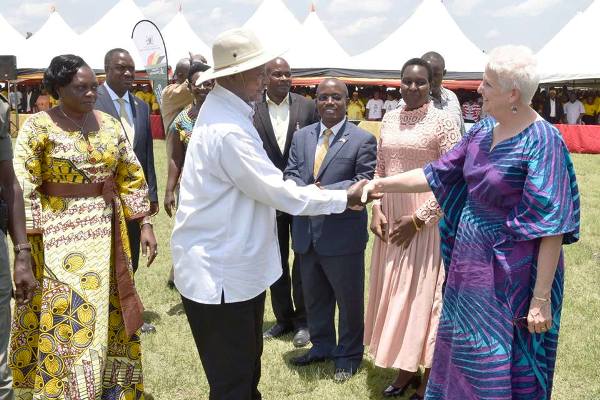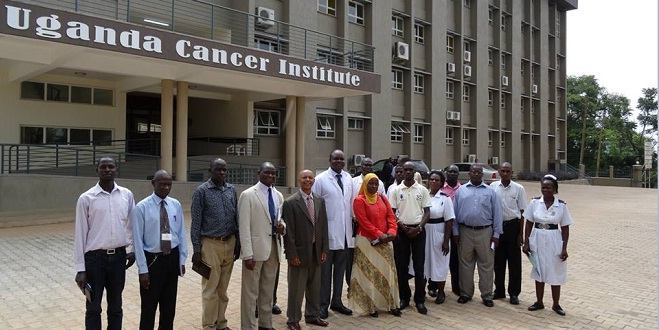A staff team from the International Monetary Fund (IMF), led by Benedict Clements, visited Kenya from February 19-March 3, 2020, to conduct the Article IV consultation discussions with the authorities and undertake negotiations on a new precautionary three-year Stand-By Arrangement/Stand-By Credit Facility.
At the end of the visit, Mr. Clements made the following statement:
“Kenya’s economy continues to perform well. Real GDP growth was an estimated 5.6 percent in 2019, driven by the continued resilience of the service sector. This helped offset a slowdown in agriculture due to delayed rains in the first half of the year and excessive rains later in the year. Headline inflation averaged 5.2 percent in 2019 and stood at 6.4 percent in February 2020, mainly driven by food prices. Food inflation has remained elevated (averaging 8.4 percent between April 2019 and February 2020) but is expected to decline with normalizing weather. The external current account deficit narrowed further to 4.6 percent of GDP from 5.0 percent in 2018, mainly due to lower imports of capital goods and petroleum products, which more than offset a decline in goods exports (e.g., in tea and coffee). Remittances remained strong. External buffers are healthy, with foreign exchange reserves increasing to US$9.1 billion (5.4 months of imports) at end-2019.
“The banking sector remains well-capitalized and liquid. The system’s core and total regulatory capital to risk-weighted assets stood at 16.8 and 18.8 percent, respectively, as of December 2019. Liquidity risk has eased with improved distribution of liquidity across all banks. Lending to the private sector started to gain momentum in 2019, reaching 7.3 percent year-on-year in January 2020. Credit is expected to rise further following the removal of interest rate controls in November 2019. The ratio of nonperforming loans has declined from its peak of 12.9 percent in April 2019 to 12.0 percent in December and should continue to fall with the recent repayment of pending bills, recovery efforts by banks, and higher credit growth. The banking system has been gradually consolidating, with two significant mergers and acquisitions transactions finalized in 2019.
“The fiscal deficit rose slightly in FY2018/19 to 7.7 percent of GDP and nominal public debt reached 62.1 percent of GDP. The authorities target a reduction of the budget deficit to 6.3 percent of GDP in FY2019/20, with revenue boosted by dividend transfers from state-owned enterprises and expenditure curtailed by a reduction in inefficient spending. Important progress was made on reducing the stock of pending bills from previous years.
“Discussions focused on the policies needed to support the authorities’ ambitious reform agenda, which aims to further bolster Kenya’s strong and inclusive growth. The discussions covered revenue and expenditure policies needed to reduce the deficit this fiscal year and achieve further fiscal consolidation over the next three years to reduce debt vulnerabilities while preserving high-priority, growth-enhancing public investment and social spending; public financial management reforms to increase the efficiency, effectiveness, transparency, and accountability of public spending; transformation of the banking system through the Banking Sector Charter to further strengthen financial stability and increase access to financing, including for small businesses; modernization of the monetary policy framework; steps to improve governance and strengthen the anti-corruption framework; and reforms to boost growth and improve gender inclusiveness.
“Significant progress was made during the visit, and discussions will continue in the coming period. There is broad agreement on the main principles of a plan for growth-enhancing fiscal consolidation that would cut waste and boost revenues to enable priority spending while reducing the deficit to below 4 percent of GDP by FY2022/23 as targeted in the authorities’ draft Budget Policy Statement. Technical work will continue to firm up underpinnings of the plan, which could be supported by a Fund arrangement.”
The team thanked the authorities for their hospitality and constructive discussions.
The team met with President Uhuru Kenyatta, Cabinet Secretary for the National Treasury, Mr. Ukur Yatani; Governor of the Central Bank of Kenya (CBK), Dr. Patrick Njoroge; Head of the Public Service, Mr. Joseph Kinyua; the Principal Secretary for the National Treasury, Dr. Julius Muia; Deputy Governor of the CBK, Ms. Sheila M’Mbijjewe; and senior government and CBK officials. Staff also had productive discussions with representatives of the private sector, civil society organizations, and development partners.






